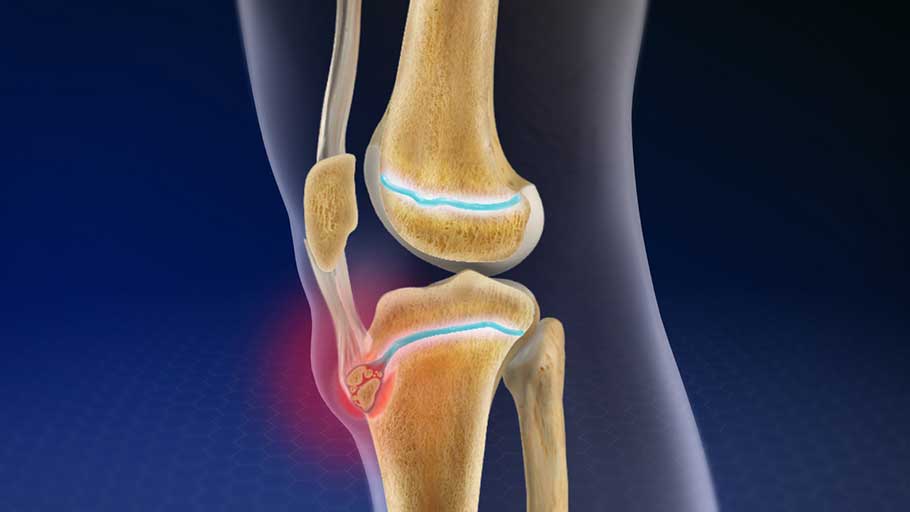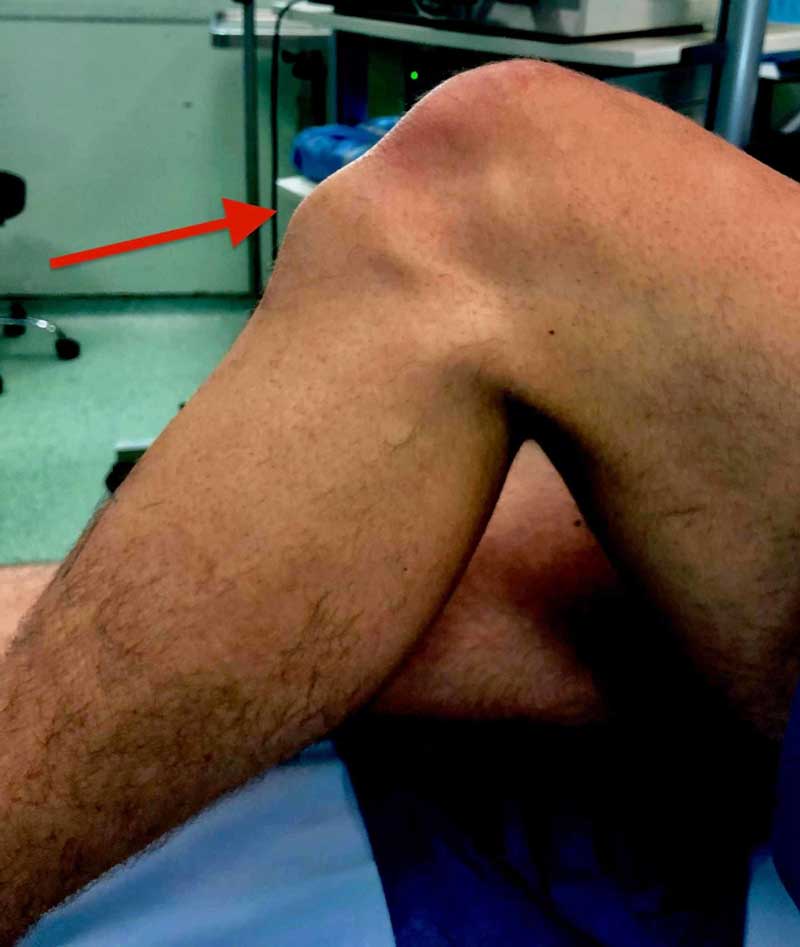WHAT IS OSGOOD-SCHLATTER DISEASE?
Osgood-Schlatter disease could cause a painful, bony bump on the shinbone just below the knee. It generally happens in children and adolescents experiencing growth spurts during puberty.
Osgood-Schlatter disease happens most usually in children who participate in sports that involve running, jumping, and swift changes of direction like soccer, basketball, figure skating, and ballet.
While the disease was once more common among boys, the gender gap has narrowed as more girls have become involved with sports.
The Osgood-Schlatter disease generally happens in boys ages twelve to fourteen and girls ages ten to thirteen. The difference is that girls come into puberty sooner than boys. The condition generally resolves on its own, once the child’s bones stop growing.
OSGOOD-SCHLATTER DISEASE SYMPTOMS
Knee pain and swelling just below the kneecap are the main signs of Osgood-Schlatter disease. Pain generally worsens during specific activities, like running, kneeling, and jumping, and eases with rest.
The condition generally happens in just one knee, but it could affect both knees. The discomfort could last from weeks to months and could recur until your child stops growing.
WHEN SHOULD YOU SEE A DOCTOR?
Call your child’s doctor or primary care physician if knee pain interferes with your child’s ability to perform everyday activities. Look for medical attention if the knee is inflamed and red or if the knee pain is related to fever, locking, or knee joint instability.
OSGOOD-SCHLATTER DISEASE CAUSES
During activities that involve running, jumping, and bending for like soccer, basketball, volleyball, and ballet your child’s thigh muscles (quadriceps) pull on the tendon that joins the kneecap to the growth plate at the top portion of the shinbone.
This persistent stress could cause the tendon to pull on the growth plate where the tendon inserts into the shinbone, resulting in the pain and inflammation related to Osgood-Schlatter disease. Some children’s bodies try to close that gap with new bone growth, which could result in a bony lump at that spot.

OSGOOD-SCHLATTER DISEASE RISK FACTORS
The primary risk factors for Osgood-Schlatter disease are:
- Age – Osgood-Schlatter disease happens during puberty’s growth spurts. Age ranges vary by sex because girls enter puberty earlier than do boys. Osgood-Schlatter disease generally happens in boys ages twelve to fourteen and girls ages ten to thirteen.
- Sex – Osgood-Schlatter disease is more common among boys, but the gender gap is narrowing as more girls become involved with sports.
- Sports – The condition occurs most usually with sports that involve running, jumping, and quick changes in direction.
- Flexibility – Tightness in the quadriceps muscles could increase the pull of the kneecap’s tendon on the growth plate at the top of the shinbone.
OSGOOD-SCHLATTER DISEASE COMPLICATIONS
Complications of Osgood-Schlatter disease are rare. If they happen, they may include chronic pain or localized inflammation.
Even after symptoms have resolved, a bony bump may remain on the shinbone just below the kneecap. This bump could persist to some degree throughout your child’s life, but it does not generally interfere with knee function.
In rare cases, Osgood-Schlatter disease could cause the growth plate to be pulled away from the shinbone.
OSGOOD-SCHLATTER DISEASE DIAGNOSIS
During the physical examination, your doctor or primary care physician will check your child’s knee for tenderness, inflammation, pain, and redness. X-rays might be taken to look at the bones of the knee and leg and to more closely analyze the region where the kneecap tendon attaches to the shinbone.

OSGOOD-SCHLATTER DISEASE TREATMENT
The Osgood-Schlatter disease generally resolves without formal treatment. Symptoms generally disappear after your child’s bones stop growing.
Medications – Over-the-counter pain relievers, for example, acetaminophen (Tylenol, others), ibuprofen (Advil, Motrin IB, Children’s Motrin, others), or naproxen sodium (Aleve) may help.
Therapy – A physical therapist could teach your child exercises to stretch the thigh’s quadriceps, which could help lower the tension where the kneecap (patella) tendon attaches to the shinbone. A patellar tendon strap also could help relieve the tension. Strengthening exercises for the quadriceps and legs, in general, could help stabilize the knee joint.
Surgery – In very uncommon cases, if the pain is debilitating and does not ease off after the growth spurt, surgery to remove the bony overgrowth may be suggested.
If you or anyone you know is suffering from Osgood-Schlatter disease, our expert providers at Specialty Care Clinics will take care of your health and help you recover.
Call us on 469-545-9983 to book an appointment for an at-home check-up.
